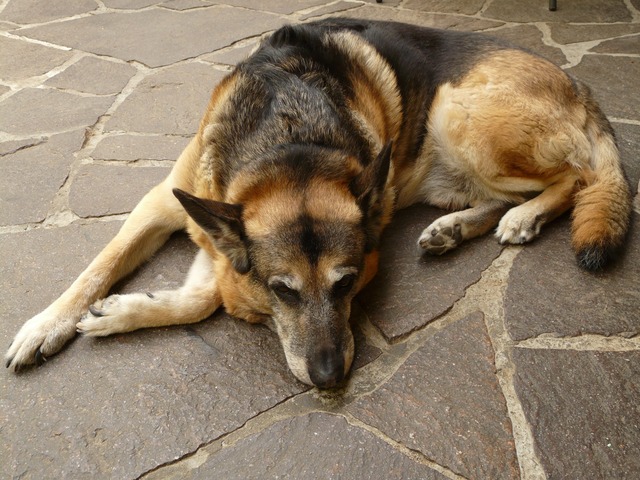
There are many things that might cause a skin ulcer, from everyday annoyances like bug bites, or even cancer. Skin ulcers themselves aren’t serious, but the cause for them may be, so you’ll want to have your dog examined by a vet as soon as possible to find out what it may be.
A skin ulcer is an open sore that oozes pus, and could be a sign of injury, infection or disease. Treatment will vary depending on the underlying cause, but the ulcer should heal within a few weeks if kept clean and unbothered.
Symptoms of Skin Ulcers in Dogs
Skin ulcers can appear anywhere on the body as an open lesion that is oozing pus. You may also notice some loss of pigment in the skin or hair loss, and perhaps some redness and inflammation around it. Depending on the cause of the ulcer, your dog may also display:
– lethargy
– loss of appetite
– pain
– depression
Causes of Skin Ulcers in Dogs
When the upper layer of your dog’s skin is compromised, an ulcer will affect the deeper layers of skin. Some of the reasons a skin ulcer may appear are:
– Adverse reactions to bug bites or to drugs
– Trauma or burns
– Fungal infection, such as blastomycosis or cryptococcosis
– Bacterial infection
– Nutritional disorders
– Cancer, such as lymphoma and basal cell tumors
– Parasitic disorders, including mange
– Autoimmune disorders, such as pemphigus
– Congenital disorders – the skin is abnormal at birth, in which case the abnormality may or may not be inherited
– Metabolic disorders
Some breeds are more likely to be affected by some of the causes above, due to genetics, age, physical characteristics or environment, but all breeds are at risk for skin ulcers.
Diagnosis of Skin Ulcers in Dogs
How the skin ulcer is treated will depend on the underlying cause. Most can be treated at home, but others may cause your vet to consider hospitalization. In all cases, though, the area should be kept clean and free of pressure. The wound needs to stay moist, so that blood can reach it and help move the healing process along. You can ask your vet about hydroactive wound dressings which will mold to the sore and keep it moist for you.
If the ulcer came about because of fungal or bacterial infection, your vet will prescribe medication to fight them off. Other causes, like cancer or burns should be treated according to your vet’s recommendation.
Treatment should take a few weeks, and the wound will slowly close and heal. You should keep an eye on your dog to make sure he isn’t picking at it and ensure he doesn’t develop any additional symptoms.
Recovery of Skin Ulcers in Dogs
Recovery could take several weeks to several months, depending on the cause. Don’t allow your dog to lick or bite the ulcer, and don’t allow him to swim, since that could cause infection in the open sore. If you need to, remove any dead tissue from it as it collects to make the healing process go a bit more smoothly.
Your vet may request a follow up to see how it is healing and to monitor underlying conditions. The ulcer itself should be gone in a few weeks if cared for properly.

